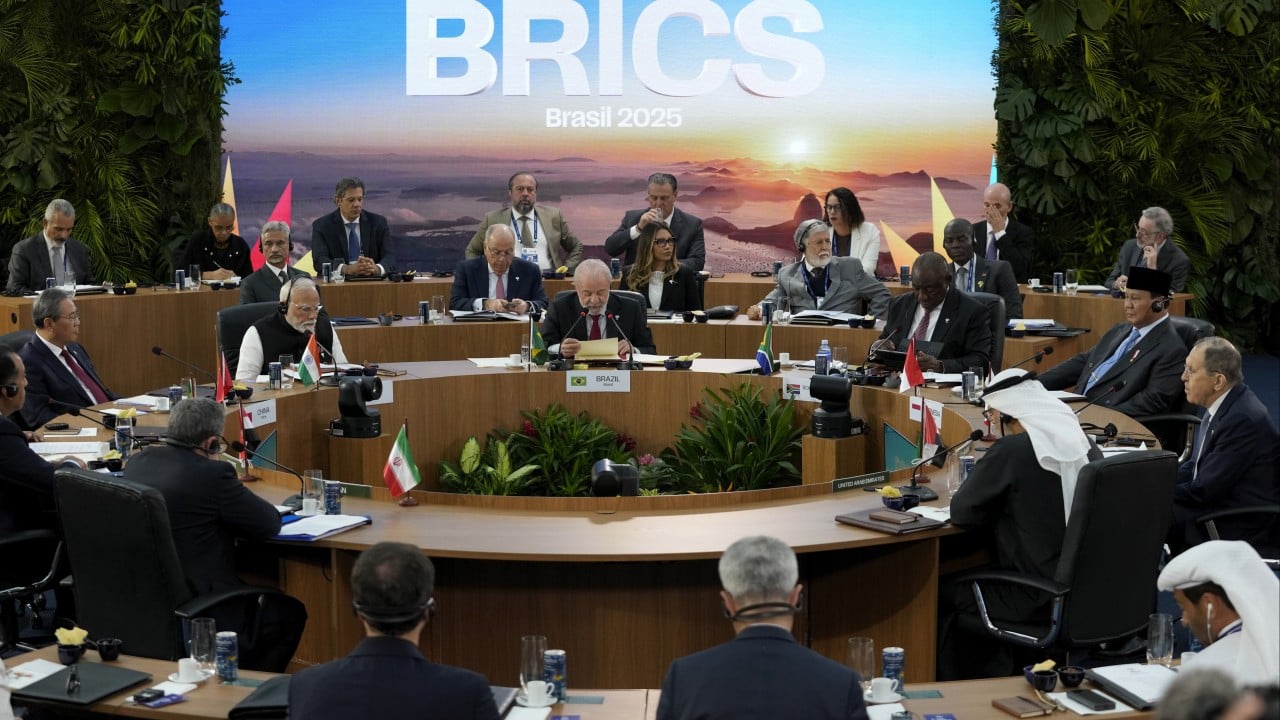“Golden brick countries” – that’s how Brics is translated in Chinese, a name that speaks volumes about its founding aspirations. But as the expanded bloc emerged from its Rio de Janeiro summit, it projected something more potent than aspiration. The message was loud and clear: the era of unipolar global dominance is drawing to an end.
Advertisement
Brics leaders spoke with growing confidence, condemning “coercive” economic tactics, effectively calling for de-dollarisation and rejecting US unilateralism.
Following this display of unity, US President Donald Trump threatened an additional 10 per cent tariff on any country “aligning themselves with the anti-American policies of Brics”. Since then, he has slapped a 50 per cent tariff on Brazil, in part for the trial of former president Jair Bolsonaro, accused of plotting a coup – which Trump calls a “witch hunt”.
Once little more than a diplomatic acronym, Brics is rapidly evolving into a geopolitical symbol. Yet its internal contradictions – India’s careful balancing act, Brazil’s pragmatic diplomacy, South Africa’s domestic crises – continue to undermine its coherence. The bloc stands at a crossroads: can it become a true alternative to the G7, or is it merely a fractured mirror of diverging interests?
Brics is neither a formal military alliance like Nato nor a structured economic entity like the European Union. Rather, it is a loose strategic partnership – a forum of major emerging economies that collaborate on shared concerns, particularly global governance, development and financial reform.
Advertisement
Founded in 2009 after the global financial crisis struck, by Brazil, Russia, India and China, with South Africa joining soon after, Brics was conceived as a platform to push back against Western dominance and promote South-South cooperation.

